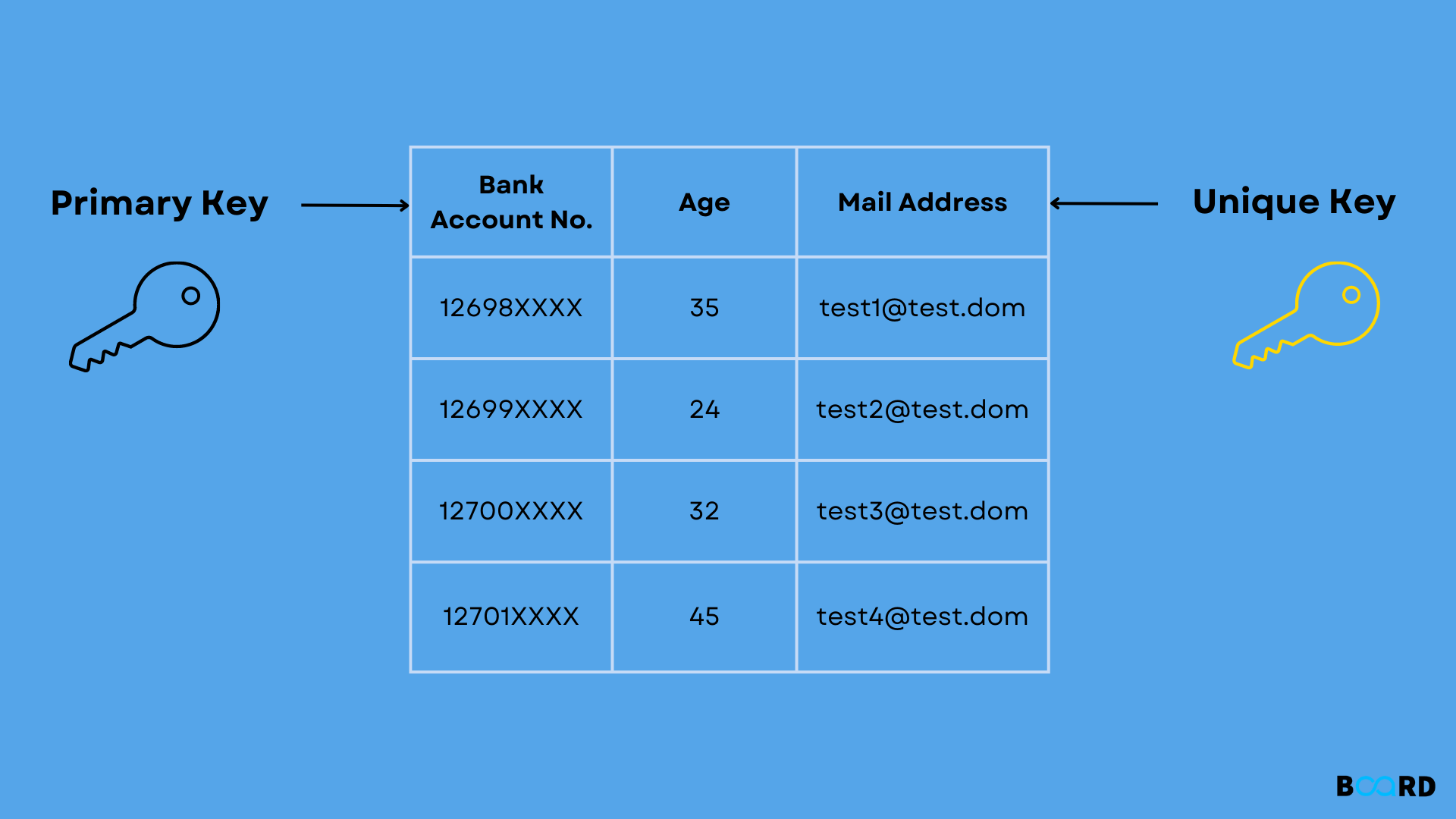Mastering DBMS: Learn Basics to Advanced Technique
Primary Key and Unique Key in DBMS: Differences

Introduction
Have you ever thought about what are primary and unique keys? Do you know why we use them? If not, then don’t worry. Board Infinity got your back.
In this article, we will discuss the difference between primary key and unique key. We will discuss what they are. So basically, the column or combination of columns in MySQL used to build a relationship between one or more tables is known as the "key." Additionally, they are utilized to access table records. A column, you can say a group of columns in a table or relation is guaranteed to be unique using both keys. The primary key identifies each record in the database, while the unique key prevents duplicate entries in a column with the exception of NULL values. Before moving on to the difference between them, let us discuss what a primary key is.
Primary Key: What is It?
A table's primary key is a column that identifies each tuple (row). The table's primary key enforces integrity restrictions. A table may only contain one main key. Duplicate and NULL values cannot be used in the primary key. Choosing the primary key value in a table carefully is important because it can change quite infrequently. A foreign key from another table may use a primary key from another table. Let us understand its characteristics.
Characteristics
The following are the main fundamental characteristics:
- Duplicate values are not permitted in the primary key column.
- It implements the entity integrity of the table.
- A table may only have one primary key column.
- From one or more table fields, we can create the primary key.
- NOT NULL constraints should be present in the primary key column.
Unique Key: What is It?
Unique key constraints can uniquely identify an individual tuple in a relation or table. Unlike the main key, a table may have several unique keys. Only one NULL value per column is permitted for unique key restrictions. Additionally, the foreign key of another table makes reference to unique restrictions. It can be used to enforce unique constraints on a column and a collection of columns that are not primary keys. Let us discuss its main characteristics.
Characteristics
The following are the fundamental distinctive characteristics:
- One or more table fields can be used to create the unique key.
- There may be several distinct key columns defined in a table.
- Unclustered unique indexes are where a unique key is, by default, found.
- The column with the unique constraint may store a NULL value, but only one NULL is permitted per column.
- The unique constraint can be referred to as the foreign key to maintaining a table's uniqueness.
Difference Between Primary Key and Unique Key
Here are the differences between them:
Conclusion
In this article, we have discussed the difference between primary key and unique key. We've discussed that a unique key is helpful when we don't want values in the columns to duplicate one another. Additionally, the primary key comes in handy when we don't want to leave a NULL value in the table. In order to link tables together, it can also be ideal when there is a foreign key in a different table.
